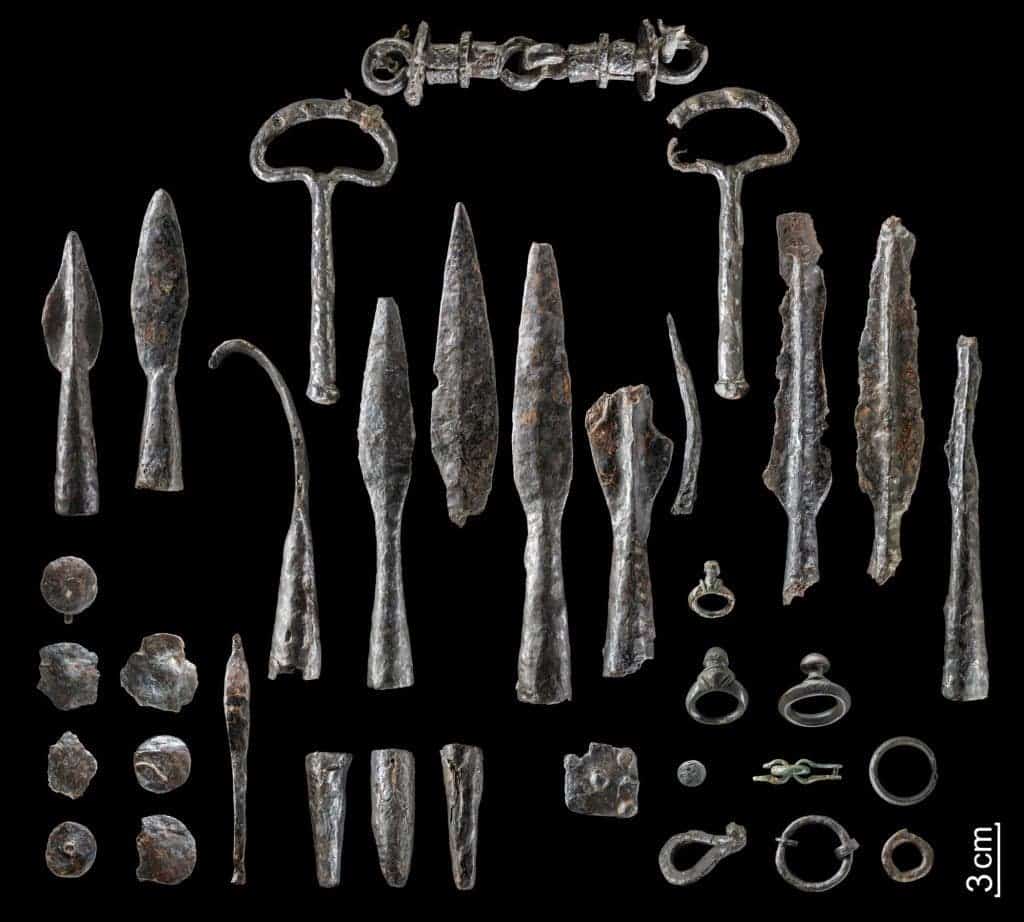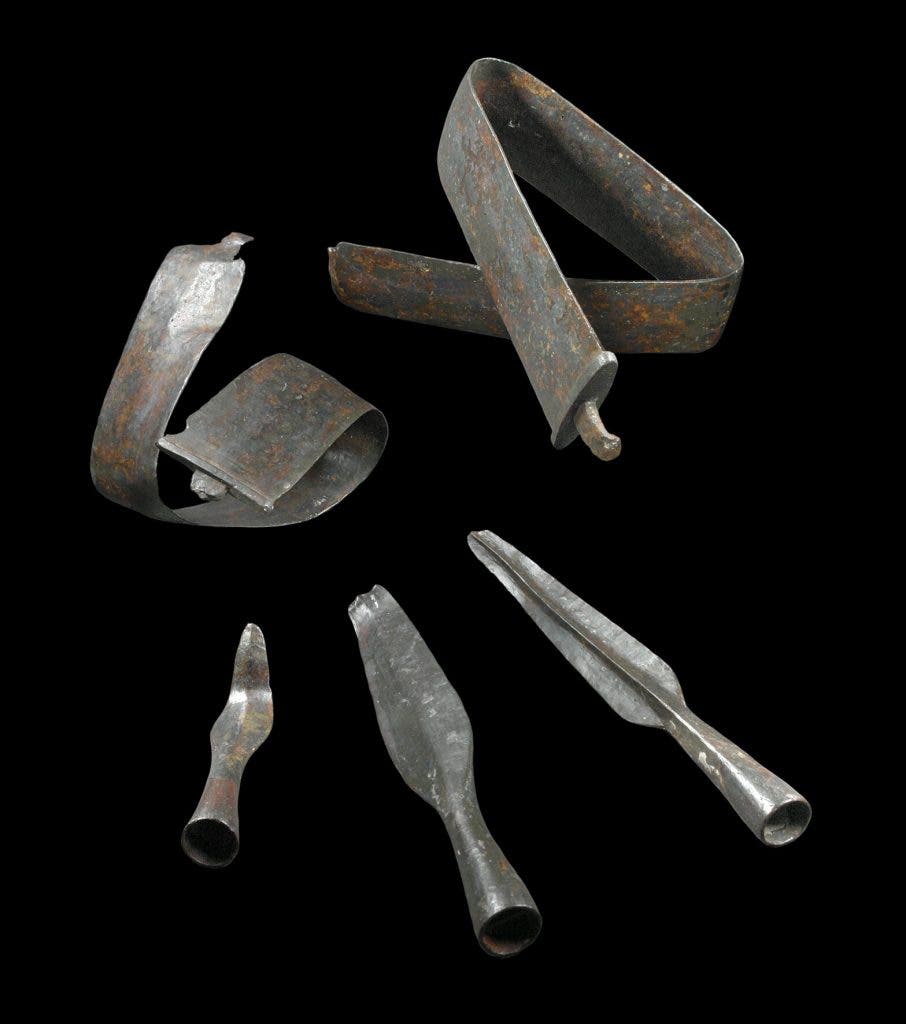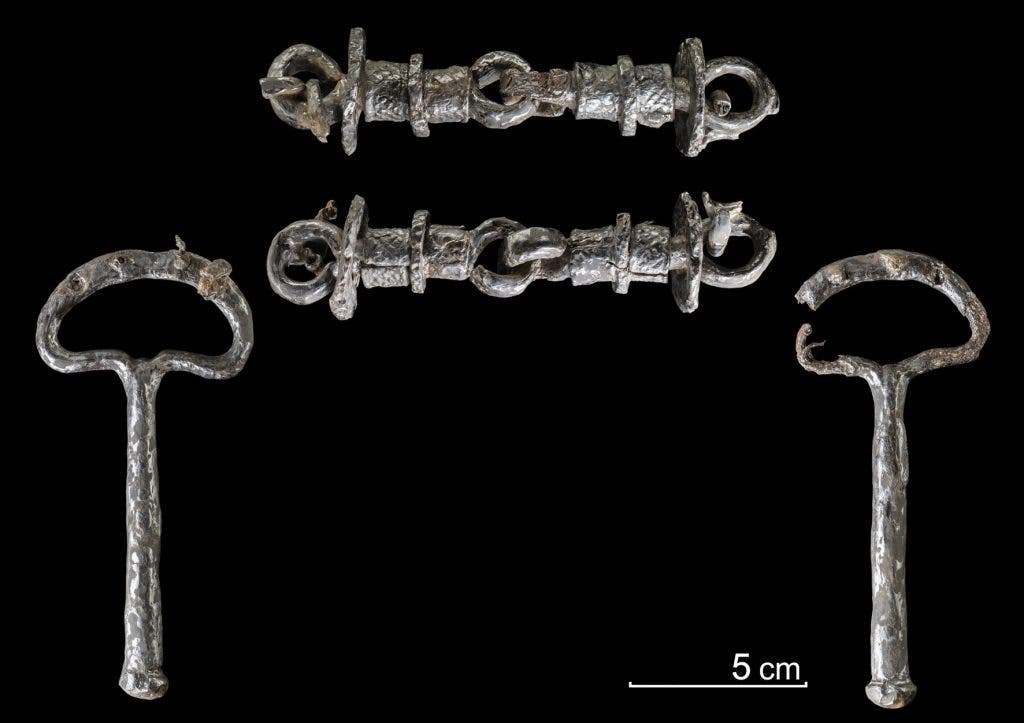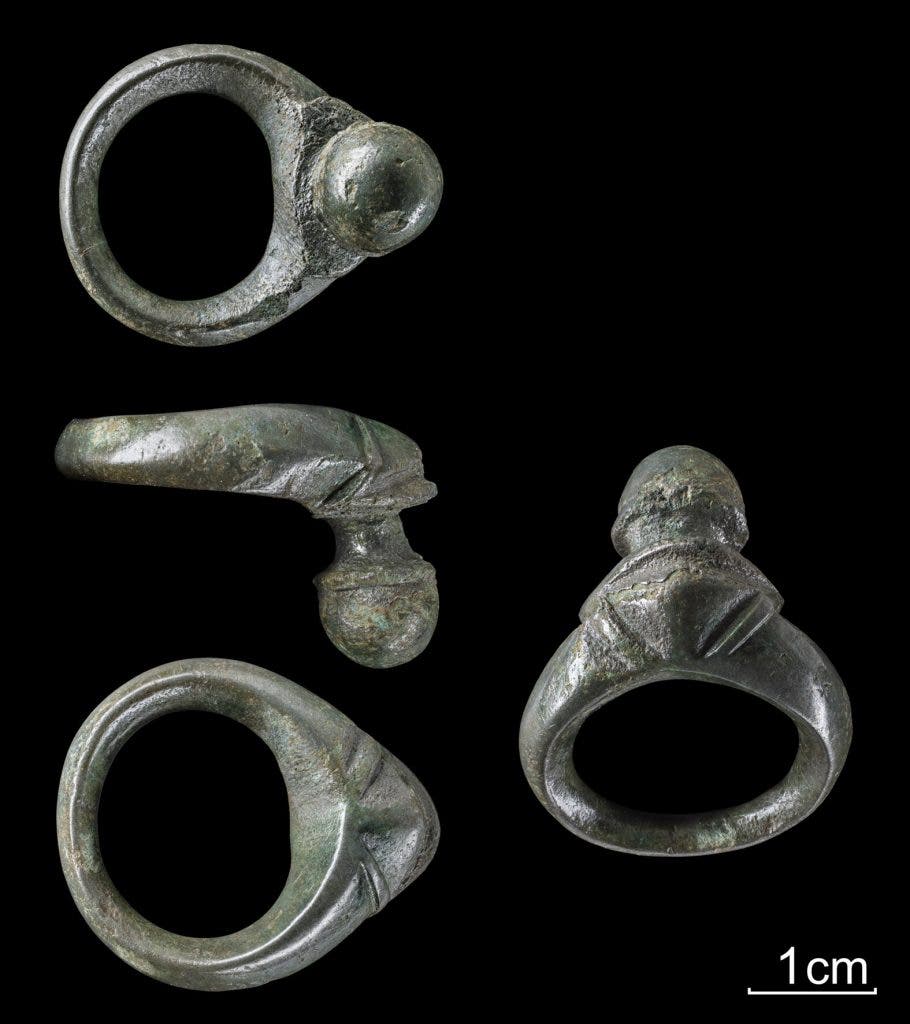Researchers have just uncovered one of the largest stashes of Iron Age weapons ever discovered in Germany. Around 100 different artifacts have been recovered from the site.

The advent of the Iron Age was an important stepping stone in our technological history. It was marked, quite unsurprisingly, by the introduction of iron as a material for tools and weapons. Iron-carbon alloys (what we refer to as ‘iron’) generally have similar properties to properly processed bronze (the metal it replaced), but iron has the huge advantages of being more abundant and simpler to produce, while having the downsides of requiring higher temperatures and more complex ore processing techniques.
At first, the use of it was quite limited, but as the know-how of smelting iron spread, so did its use. In Germany, the (early) Iron Age spanned between 800 to 45 BC, followed by the late Iron Age up until 1 BC, when the area became a Roman province. It was probably during the fighting for this transition that the stash was deposited at the site.
Stashed for a rainy day
The site is close to the German city of Schmallenberg, on the top of mount Wilzenberg. A press release by the Westfalen-Lippe Landscape Association, which made the discovery, explains that around 100 Celtic Iron Age artifacts were unearthed here.
This isn’t the first time the Wilzenberg site attracts academic interest. Work has been ongoing here ever since the 1950s. Prior digs have revealed a series of features suggesting that the site served as a hill fort back in the day, most notably ramparts. But there were some artifacts recovered over this time, as well.
Hillforts were relatively small fortifications made of local materials — from stone or wood to clay or soil — that were meant to discourage foreign incursions, or slow them down enough for a response to be mustered; hence, the ramparts. And, according to the findings, the Wilzenberg site also served as a weapon stash, most likely for locals or the soldiers manning the fort.
What prompted the discovery was the association’s use of metal detector devices to search for iron artifacts hidden beneath the structure’s former floor. Around 100 spears, swords, lance tips, belt hooks, and iron harness elements were discovered. Although dating them directly with sufficient accuracy proved impossible, the team explains that context cues would place the artifacts somewhere between the years 300 and 1 BC.
What was really peculiar about the finding is the condition the weapons here were uncovered in. Most of the swords here were severely damaged or deformed, being bent into halves or thirds, for example. Both the spears and lance tips were blunted. The team explains that the sheer scale of the damage seen here suggests this was an intentional, sustained effort. It was most likely carried out following a battle, as the victorious army wanted to prevent these weapons from being used again.
It’s also important to note that the weapons and artifacts were found piled up, not spread around, which indicates that they were carried to and deposited on the site. This suggests that the battle was fought elsewhere, and the weapons were then recovered, transported to Wilzenberg, damaged, and deposited here.
It’s very likely that the battle occurred around the city of Wilzenberg, and that the winners took these items as their trophy.
The original press release (in German) is available here.
Was this helpful?






